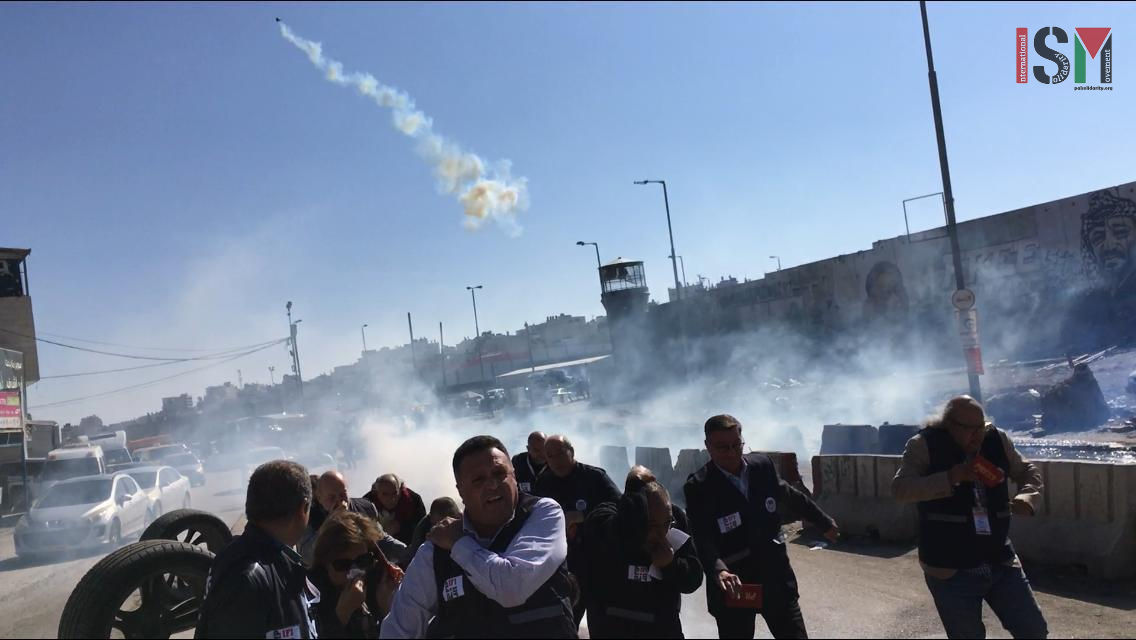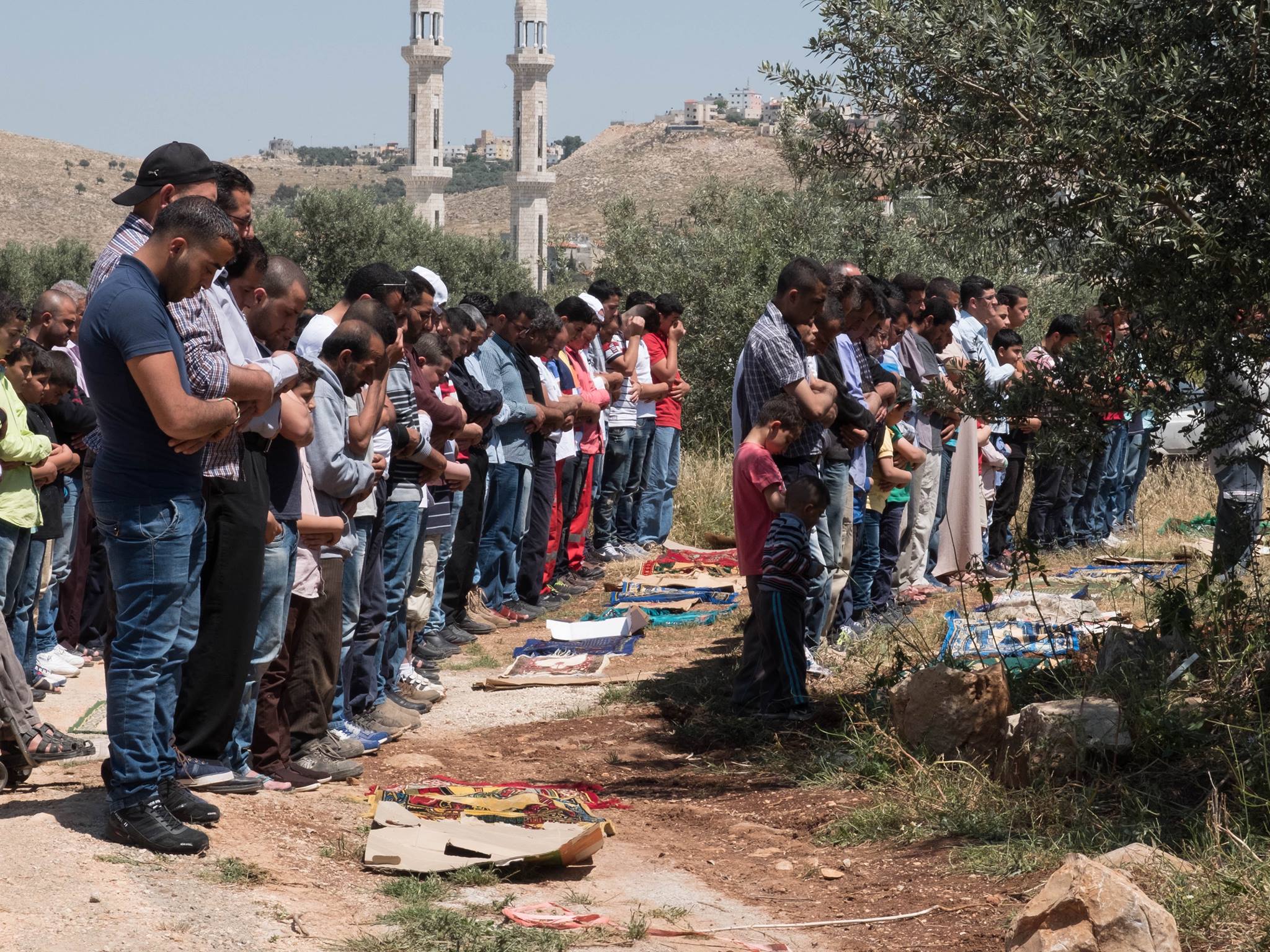Tag: protest
-
Soldiers invade Al-Khalil; fire live ammunition at protesters
April 5, 2019 | International Solidarity Movement, Al-Khalil team | Al-Khalil (Hebron), occupied Palestine Israeli occupation forces storm into Al-Khalil and fire live ammunition at protesters after bombarding the city with tear gas, stun grenades, and rubber-coated steel bullets. Around 1pm soldiers invaded Al-Khalil through checkpoint 56. The soldiers fired stun grenades at protesters. Immediately…
-
International and Palestinian Journalists Tear Gassed
November 17, 2018 | International Solidarity Movement, Ramallah team | Ramallah, occupied Palestine The International Federation of Journalists (IFJ) decided to hold its annual meeting in Palestine this year, where they demonstrated at the infamous Qalandia checkpoint on Saturday. The dozens of journalists, holding only international press cards, were immediately met with canisters of tear…
-
Non violent protest in Ni’lin once again met with violence
15th April 2016 | International Solidarity Movement, al-Khalil team | Ni’lin, occupied Palestine On Friday, the 15th of April 2016 – and as part of a West-Bank wide protest for Prisoner’s Day – the villagers of Ni’lin held their weekly non-violent demonstration. They were protesting against Israeli apartheid politics, the theft of the villagers land…



